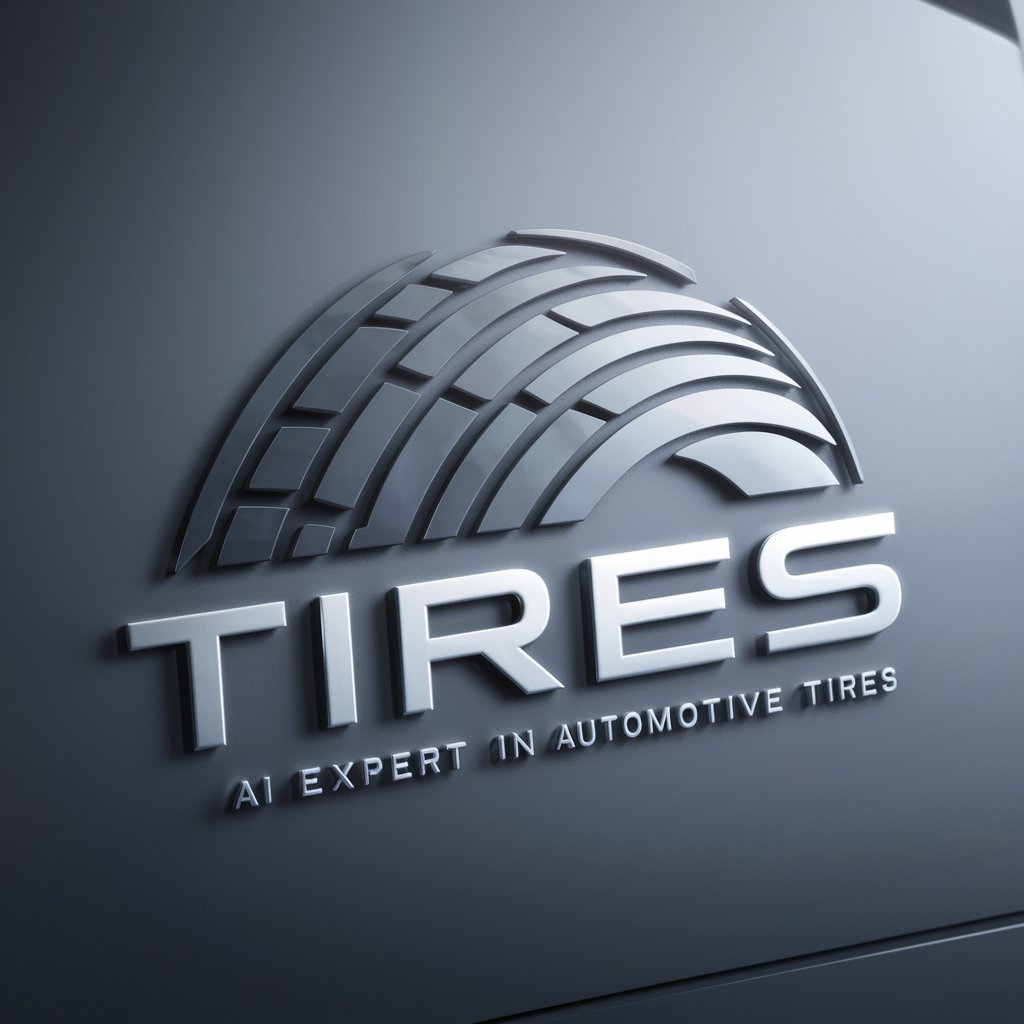
Tires - Tire Information and Advice

Hello! Let's talk tires and keep you rolling smoothly.
Empowering Your Drive with AI Tire Insights
What are the best tires for different weather conditions?
How often should I rotate my tires?
Can you explain the differences between all-season and winter tires?
What should I consider when buying new tires for my car?
Get Embed Code
Overview of Tires
Tires are a critical component of vehicles, designed to provide traction, support vehicle load, absorb shocks, and maintain direction of travel. They are constructed from layers of rubber, steel, and fabric, shaped into a round, hollow design that fits around a wheel rim. Tires enable efficient transfer of the vehicle's power to the ground, allowing for acceleration, braking, and steering. For example, in wet conditions, the tread pattern on tires helps channel water away from the contact surface to prevent hydroplaning, illustrating how tire design enhances safety and performance. Powered by ChatGPT-4o。

Primary Functions of Tires
Supporting Vehicle Load
Example
Air-filled tires, or pneumatic tires, support the weight of the vehicle through air pressure maintained within the tire. This is crucial for all vehicles, from small cars to large trucks, ensuring they can safely carry passengers and cargo.
Scenario
Consider a fully loaded commercial truck; the tires must be capable of supporting several tons of weight while also providing stability and fuel efficiency.
Providing Traction
Example
Tires are designed with specific tread patterns that grip the road surface, allowing vehicles to accelerate, decelerate, and maneuver safely. The design varies for different driving conditions, such as dry, wet, or snowy roads.
Scenario
In snowy conditions, winter tires with deep treads and biting edges grip the road better than all-season tires, reducing the risk of slipping and improving control.
Absorbing Road Shocks
Example
The flexible rubber compound and the tire's structure allow it to absorb vibrations and bumps from the road, providing a smoother ride. This is especially important for maintaining vehicle stability and passenger comfort.
Scenario
On a rough, uneven road, the tires absorb most of the impact, reducing the stress on the vehicle's suspension system and improving ride quality.
Maintaining Direction and Steering
Example
The tire's design, including its shape and tread pattern, plays a crucial role in steering response and directional stability. This allows the driver to maintain control over the vehicle's path.
Scenario
While making a high-speed turn, the tire's contact with the road surface ensures that the vehicle follows the driver's intended direction, minimizing the risk of skidding or losing control.
Who Benefits from Using Tires
Everyday Drivers
Individuals using vehicles for daily commutes, errands, or travel. They benefit from tires that provide safety, fuel efficiency, and comfort, tailored to their specific driving conditions and vehicle type.
Commercial Transport Operators
Businesses involved in transportation, delivery, and logistics. They require durable, high-performance tires to ensure safety, minimize downtime, and control operational costs across various road conditions.
Automotive Enthusiasts and Motorsport Participants
This group seeks high-performance tires for racing, off-roading, or other specialized driving activities. They benefit from tires designed for specific performance characteristics, such as enhanced grip, speed capability, and heat resistance.
Fleet Managers
Managers responsible for maintaining a fleet of vehicles, such as rental cars, government vehicles, or corporate fleets. They benefit from reliable, cost-effective tire solutions that ensure safety, compliance, and efficiency for a wide range of vehicles.

How to Use Tires Effectively
Begin Your Journey
Start by exploring Tires without the need for signing up or subscribing to premium services at yeschat.ai, offering a hassle-free trial experience.
Identify Your Needs
Determine your specific tire-related questions or challenges, such as selection, maintenance, or understanding tire types.
Engage with Tires
Utilize the chat function to ask your detailed questions, ensuring to be as specific as possible for the most accurate advice.
Apply Insights
Take the personalized advice and insights provided to make informed decisions about tire maintenance, purchase, or care.
Continuous Learning
Keep engaging with Tires for ongoing advice and to stay informed about the latest in tire technology and maintenance practices.
Try other advanced and practical GPTs
Budget Friendly
Empower your finances with AI

Disposable
Empowering Eco-Friendly Choices with AI

Design solutions for packaging people
Elevate Packaging with AI Creativity

Historien Capgemini & Michelin
AI-Powered Historical Business Insights

Content King
Elevate Your Content with AI-Powered SEO

Pawn
Empowering your pawn shop experience with AI.

ESG Expert Assistant
Empowering ESG Reporting with AI

Value GPT
AI-powered Investment Guidance

Stock
Revolutionizing File Management with AI

Vision Funding
Empowering Investment Decisions with AI

Tim Assistant
Empowering your code and documentation with AI

STA GPT
Empowering Sales with AI

In-Depth Q&A About Tires
What are the signs of tire wear I should look out for?
Look for uneven tread wear, bald spots, sidewall cracks, bulges, and vibration while driving as key indicators of tire wear.
How often should tires be rotated, and why?
Tires should be rotated every 5,000 to 8,000 miles to promote even wear, extend tire life, and maintain optimal vehicle performance.
Can you explain the difference between all-season and winter tires?
All-season tires provide balanced performance in various conditions, while winter tires offer superior grip and safety in snow and ice, featuring specialized tread designs and rubber compounds.
What is the impact of tire pressure on vehicle performance?
Proper tire pressure ensures optimal tire footprint, improving fuel efficiency, safety, and handling. Underinflated or overinflated tires can lead to uneven wear, reduced traction, and increased risk of tire failure.
How do I choose the right tire size for my vehicle?
Refer to your vehicle's owner manual or the placard on the driver's side door jamb for the recommended tire size, considering factors like tire width, aspect ratio, and diameter for compatibility and performance.